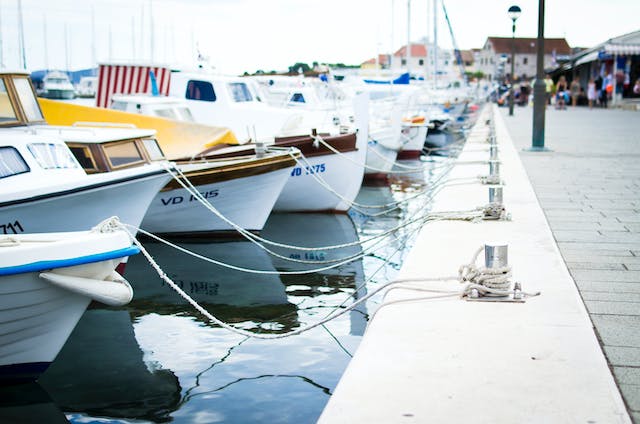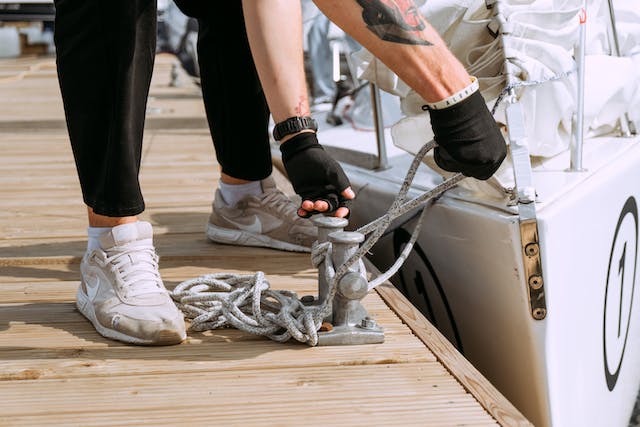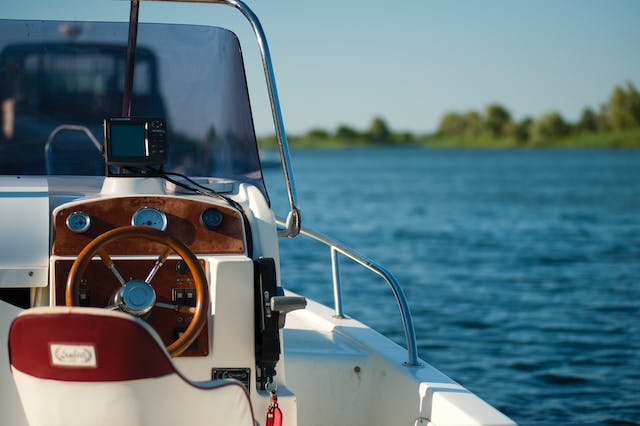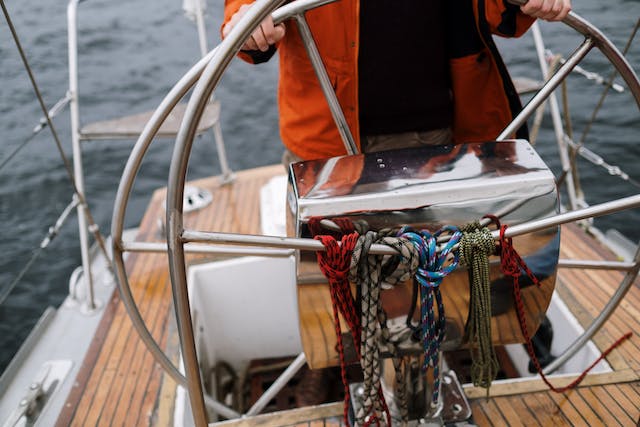How Long Can You Finance a Boat: A Comprehensive Guide
When it comes to buying a boat, many people need to secure financing to make the purchase. The length of time that you can finance a boat can vary depending on a number of factors. Understanding how long you can finance a boat can help you make informed decisions about your purchase and ensure that you are able to comfortably afford your new vessel.
Boat loans typically have repayment terms that range from two to 20 years. The length of your loan will depend on a variety of factors, including the size and cost of your boat, your credit score, and the lender you choose. Generally, larger boats and those with a higher price tag will have longer repayment terms, while smaller boats may have shorter terms. It is important to note that longer loan terms may result in lower monthly payments, but you will end up paying more in interest over the life of the loan.
When financing a boat, it is important to shop around for the best rates and terms. Different lenders may offer different loan lengths and interest rates, so it is important to compare your options before making a decision. Additionally, it is important to consider your own financial situation and budget when deciding on a loan term. While a longer loan term may result in lower monthly payments, it may not be the best choice if it means taking on more debt than you can comfortably afford.
Understanding Boat Loans
When it comes to buying a boat, most people require financing to make the purchase. Boat loans are similar to other types of loans, but there are some unique factors to consider. Here is what you need to know about boat loans.
Types of Boat Loans
There are several types of boat loans available, including secured loans, unsecured loans, personal loans, home equity loans, and dealer financing. Secured loans are the most common type of boat loan, where the boat serves as collateral for the loan. Unsecured loans, on the other hand, do not require collateral, but they often come with higher interest rates and shorter loan terms.
Personal loans can be used to finance a boat, but they typically have lower loan amounts and shorter terms than secured loans. Home equity loans are another option, where the borrower uses their home as collateral for the loan. Finally, dealer financing is available through the boat dealer, but it often comes with higher interest rates and fees.
Factors Affecting Boat Loan Terms
Several factors can impact the terms of a boat loan, including credit score, loan term, interest rate, loan amount, down payment, income, debt-to-income ratio, and creditworthiness. A higher credit score typically leads to better loan terms, including a lower interest rate and longer loan term.
Loan term refers to the length of time the borrower has to repay the loan. A longer loan term can lead to lower monthly payments, but it also means paying more in interest over the life of the loan. The interest rate is another critical factor to consider, as it can significantly impact the total cost of the loan.
The loan amount and down payment also affect the loan terms. A larger down payment typically leads to better loan terms, including a lower interest rate and shorter loan term. Income and debt-to-income ratio are also important factors to consider, as they determine the borrower’s ability to repay the loan. Finally, creditworthiness is a significant factor in determining loan terms, as lenders want to ensure they are lending to a reliable borrower.
Overall, understanding boat loans is essential when considering purchasing a boat. By considering the different types of loans and the factors that impact loan terms, borrowers can make informed decisions and find the best loan for their needs.
Determining Your Budget
When considering financing a boat, it is important to determine your budget beforehand. This will help you understand what you can afford and avoid any financial difficulties in the future. Here are some things to consider when determining your budget:
Calculating Monthly Payments
One of the most important factors to consider when determining your budget for a boat is the monthly payment. This will depend on the purchase price of the boat, the interest rate, and the length of the loan. To calculate your monthly payment, you can use a loan calculator or a boat loan calculator. These calculators will help you estimate your monthly payments based on your inputs.
Total Cost of Ownership
In addition to the monthly payment, it is important to consider the total cost of ownership. This includes the purchase price of the boat, maintenance costs, insurance, and other expenses. It is important to factor in these costs when determining your budget to ensure that you can afford the boat in the long run.
When considering maintenance costs, it is important to factor in regular maintenance as well as any unexpected repairs. Insurance costs will vary depending on the type of boat and your location. It is important to shop around for insurance to find the best rates.
Overall, determining your budget for a boat requires careful consideration of all the costs involved. By calculating your monthly payments and factoring in the total cost of ownership, you can ensure that you can afford the boat and avoid any financial difficulties in the future.
Choosing the Right Boat
When it comes to financing a boat, choosing the right one is crucial. There are a variety of factors to consider, including whether to buy new or used and what type and size of boat to choose.
New vs. Used Boats
One of the first decisions to make is whether to buy a new or used boat. A new boat may be more expensive but comes with a warranty and the latest features and technology. On the other hand, a used boat may be more affordable, but it’s important to thoroughly inspect the boat and its history before making a purchase.
It’s also important to consider the age of the boat. A well-maintained older boat can be a great value, but an older boat that hasn’t been properly cared for can end up costing more in repairs and maintenance in the long run.
Boat Types and Sizes
There are a variety of boat types and sizes to consider, including sailboats, powerboats, personal watercraft, multi-hull boats, and high-performance boats. The type of boat that’s right for you will depend on your intended use and personal preferences.
Sailboats are great for those who enjoy a slower pace and the challenge of navigating with wind power. Powerboats, on the other hand, offer speed and convenience for activities such as water skiing and fishing. Personal watercraft are a popular choice for those who want a smaller, more maneuverable vessel for activities such as jet skiing.
It’s also important to consider the size of the boat. A larger boat may offer more space and amenities, but it also comes with higher costs for maintenance, storage, and fuel. A smaller boat may be more affordable, but it may not offer the same level of comfort and convenience.
Overall, choosing the right boat involves careful consideration of a variety of factors. By taking the time to research and evaluate your options, you can find the boat that’s right for you and your budget.
Loan Application Process
When it comes to financing a boat, the loan application process is an essential step. This section covers the two main subsections of the loan application process: preparing your application and understanding the loan offer.
Preparing Your Application
Before submitting your loan application, there are several things you should do to ensure you have the best chance of approval. Firstly, check your credit score. This score is a significant factor in determining whether you will be approved for a loan and what interest rate you will receive. If your credit score is low, take steps to improve it before applying for a loan.
Secondly, gather your financial information. This includes your income, expenses, and any other debts you have. Be prepared to provide documentation to support this information.
Thirdly, research the minimum credit score, loan terms, interest rates, APR, loan amounts, and repayment terms for the lender you plan to apply to. This information will help you understand what to expect when applying for a loan.
Understanding the Loan Offer
Once you submit your loan application, you will receive a loan offer from the lender. This offer will include the loan amount, interest rate, APR, and repayment terms. It is essential to carefully review this offer before accepting it.
Pay attention to the interest rate and APR, as these will determine the total cost of the loan. The loan amount and repayment terms will determine your monthly payments. Ensure that the loan offer aligns with your financial goals and budget.
In conclusion, the loan application process is a crucial step in financing a boat. By preparing your application and understanding the loan offer, you can increase your chances of approval and make an informed decision about your loan.
Financing Options and Lenders
When it comes to financing a boat, there are several options available to buyers. One can either choose to finance through a lender or opt for dealer financing. However, it is essential to compare the rates and terms offered by different lenders before making a final decision.
Comparing Lenders
There are several types of lenders that offer boat financing, including online lenders, credit unions, and marine lenders. Each of these lenders has its own set of requirements and interest rates, making it crucial to compare them before making a decision.
Online lenders are a popular option for boat financing due to their convenience and quick approval process. However, buyers must ensure that the lender is reputable and offers competitive rates.
Credit unions are another option for boat financing, and they often offer lower interest rates than traditional banks. However, buyers must be members of the credit union to qualify for financing.
Marine lenders specialize in boat financing and offer competitive rates and flexible terms. They also have a better understanding of the boating industry and can offer tailored financing options.
Securing Competitive Rates
When financing a boat, buyers must secure competitive rates to ensure that they get the best deal possible. One way to do this is by opting for a fixed interest rate, which ensures that the interest rate remains the same throughout the loan term.
Buyers must also compare the APR range offered by different lenders to ensure that they are getting a fair deal. The APR includes the interest rate and any additional fees, making it an essential factor to consider when comparing lenders.
Overall, buyers must take their time and compare different lenders and financing options to ensure that they get the best deal possible. By doing so, they can secure financing that fits their budget and helps them enjoy their new boat without any financial stress.
Finalizing the Boat Purchase
Once the buyer has found the boat of their dreams, it is time to finalize the purchase. This involves making a down payment and completing the purchase.
Making the Down Payment
The down payment is typically a percentage of the total purchase price of the boat. The amount of the down payment can vary depending on the lender, the buyer’s creditworthiness, and the purchase price of the boat. In most cases, the down payment is around 10% to 20% of the total purchase price.
The buyer can choose to make the down payment with cash, check, or by financing it. If the buyer chooses to finance the down payment, they will need to work with the finance department of the boat dealer to arrange the financing.
Completing the Purchase
Once the down payment has been made, the buyer will need to complete the purchase. This involves paying the remaining balance of the purchase price, as well as any additional fees or charges associated with the purchase.
The total purchase price of the boat includes the purchase price of the boat, any applicable taxes, registration fees, and other charges. The buyer should review the purchase agreement carefully to ensure that they understand all of the costs associated with the purchase.
The buyer can choose to finance the remaining balance of the purchase price through a boat loan or other financing options. Boat sales financing is often available through the dealer, or the buyer can seek financing from other lenders.
In conclusion, finalizing the boat purchase involves making a down payment and completing the purchase. The buyer should carefully review the purchase agreement and understand all of the costs associated with the purchase. With the right financing and a clear understanding of the purchase agreement, the buyer can enjoy their new boat for years to come.
Additional Considerations
Insurance and Maintenance
When financing a boat, it is important to consider the cost of insurance and maintenance. Insurance is necessary to protect the investment in the boat and ensure that any accidents or damages are covered. Maintenance costs can also add up quickly, especially for larger boats or those with complex systems.
It is recommended that boat owners budget for annual maintenance costs of 10-15% of the boat’s value. This includes regular maintenance such as cleaning, oil changes, and winterization, as well as unexpected repairs and replacements. Boat owners should also consider the cost of storing the boat when it is not in use, as this can also add to the overall cost of ownership.
Loan Length and Repayment
When financing a boat, the length of the loan and the repayment terms are important considerations. Longer loan terms may result in lower monthly payments, but they also mean paying more in interest over the life of the loan. Shorter loan terms may result in higher monthly payments, but they allow the boat owner to pay off the loan sooner and with less interest.
It is important to carefully consider the financial situation and goals of the boat owner when choosing a loan length and repayment terms. Boat owners should also be aware of any prepayment penalties or fees associated with paying off the loan early.
In general, it is recommended that boat owners choose the shortest loan term and highest monthly payment that they can afford. This will help to minimize the overall cost of ownership and ensure that the boat is paid off as soon as possible.
Overall, when financing a boat, it is important to consider all of the additional costs and factors that come with boat ownership. By carefully considering insurance and maintenance costs, as well as loan length and repayment terms, boat owners can make an informed decision that meets their financial goals and ensures a positive boating experience.
Frequently Asked Questions
What are the typical terms for boat financing?
Boat financing terms can vary depending on the lender and the borrower’s creditworthiness. However, most boat loans have terms ranging from 3 to 20 years. The shorter the term, the higher the monthly payments will be, but the total interest paid will be lower.
What is the maximum duration available for a boat loan?
The maximum duration for a boat loan can vary depending on the lender and the borrower’s creditworthiness. However, most lenders offer boat loans with terms of up to 20 years. Some lenders may offer longer terms for high-end boats or yachts.
How do interest rates vary for different boat loan terms?
Interest rates for boat loans can vary depending on the loan term. Generally, shorter loan terms have lower interest rates, while longer loan terms have higher interest rates. However, the borrower’s creditworthiness also plays a significant role in determining the interest rate.
Is financing available for boats older than 20 years?
Financing for boats older than 20 years can be challenging to obtain, but it is possible. Some lenders may require a higher down payment or shorter loan terms for older boats. The borrower’s creditworthiness will also play a significant role in determining the availability of financing for older boats.
What factors affect the eligibility for boat financing?
Several factors can affect the eligibility for boat financing, including the borrower’s credit score, income, debt-to-income ratio, and the boat’s value and age. Lenders also consider the borrower’s employment history, length of residency, and other factors when determining eligibility.
How does the boat loan interest rate compare to other loan types?
Boat loan interest rates are typically higher than car loan rates but lower than credit card rates. The interest rate for a boat loan will depend on the borrower’s creditworthiness, loan term, and other factors. It is always a good idea to compare rates from multiple lenders to find the best deal.









